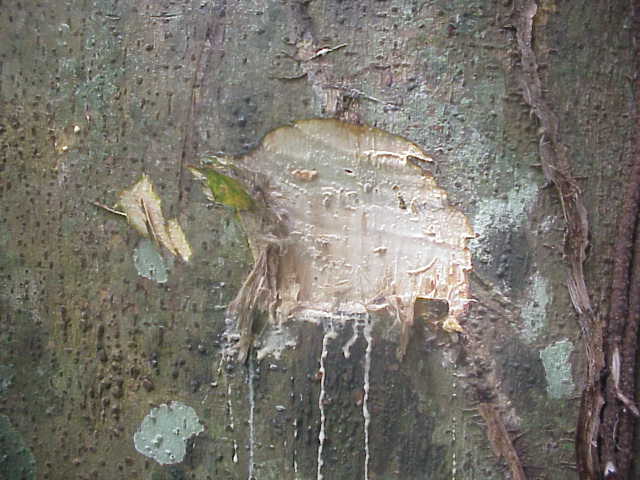A tree to take your breath away, literally
Plenty of flowering plants are bad for your health. You are probably aware of Deadly Nightshade, Hemlock and Mandrake. The hardy oleander is notoriously toxic, with the consumption of a few leaves said to be potentially fatal to young children. And then there are falling bunya pine cones, far more dangerous and likely than dislodged Bird's Nest Ferns.
Last year, Royal Botanic Gardens Victoria horticulturist Stephen Lieu told us about a particularly poisonous plant, Antiaris toxicaria, with two evocative Chinese common names - See Blood Stop Breath and Seven Up, Eight Down, Nine No Life. More prosaically, it's also called the Upus Tree
- 'upus' is a Javanese word for poison - or Poison Arrow Tree.
The botanical name, Antiaris toxicaria, also gives the game away. The genus name comes from 'Antjar', another Javanese word for this plant, and toxicaria from 'toxicon', a Greek word for arrow poison. The tree is native to Java, as you might have guessed, but also elsewhere in Asia through to tropical Australia and Africa.
So what kind of plant is this. It's a deciduous tree, with buttress roots, and drooping small branches, growing mostly in open grassy woodland across its range. Two of the African subspecies extend into wetter forests. There is only one species but up to five subspecies are recognised, three of them only in Africa I think. In Australia we have only subspecies macrophylla, with bigger leaves.
- 'upus' is a Javanese word for poison - or Poison Arrow Tree.
The botanical name, Antiaris toxicaria, also gives the game away. The genus name comes from 'Antjar', another Javanese word for this plant, and toxicaria from 'toxicon', a Greek word for arrow poison. The tree is native to Java, as you might have guessed, but also elsewhere in Asia through to tropical Australia and Africa.
So what kind of plant is this. It's a deciduous tree, with buttress roots, and drooping small branches, growing mostly in open grassy woodland across its range. Two of the African subspecies extend into wetter forests. There is only one species but up to five subspecies are recognised, three of them only in Africa I think. In Australia we have only subspecies macrophylla, with bigger leaves.
It's in the fig family, Moraceae, so you'd expect a milky sap, and it's this sap the contains the rather nasty chemicals. Stories abound about its toxicity, most of them presumably apocryphal. The common name above with the incremental numerals refers to how many steps a 'victim' can take after consuming some of this deadly latex: seven steps up a hill, eight steps down or a full nine steps on level ground. Then you die. I don't know if See Blood Stop Breath adequately describes the symptoms of consumption, but you get the idea.
The Upus Tree has some literary notoriety too, featuring in the writings of Charles Darwin's grandfather, Erasmus Darwin, and the Russian poet Alexander Pushkin. You can track these down in all your favourite internet accumulators.
What doesn't kill you only makes you stronger of course. Recent research has focused on the chemicals found in Antiaris - gyocosides, prenylaurones, chalcones, flavenones, dihydrochalcones and the like - testing them for medical uses including tumor inhibitors.
Surprisingly the bright red fruit is quite edible to birds, bats, monkeys, antelope and us. Because some of the tall tales suggest you can't get within 25 kilometres of a tree without dropping dead, you might persuade a friend (or better still not a friend) to do the fruit picking and then make yourself a very nice jam without having to share it.
Images: This is one of those rare posts where I haven't seen the plant, and therefore definitely haven't photographed it. The drawing of the tree is from Stir Fry Central, and is said to be sourced (by Andrew Clifford) from C E Armand Semple, Elements of Materia Medica and Therapeutics figure 229, p 333. The leaves are from Wikimedia Commons, provided by Vinayaraj V R, and the sap leaking from an axe mark is from a PNG Trees page.



Comments